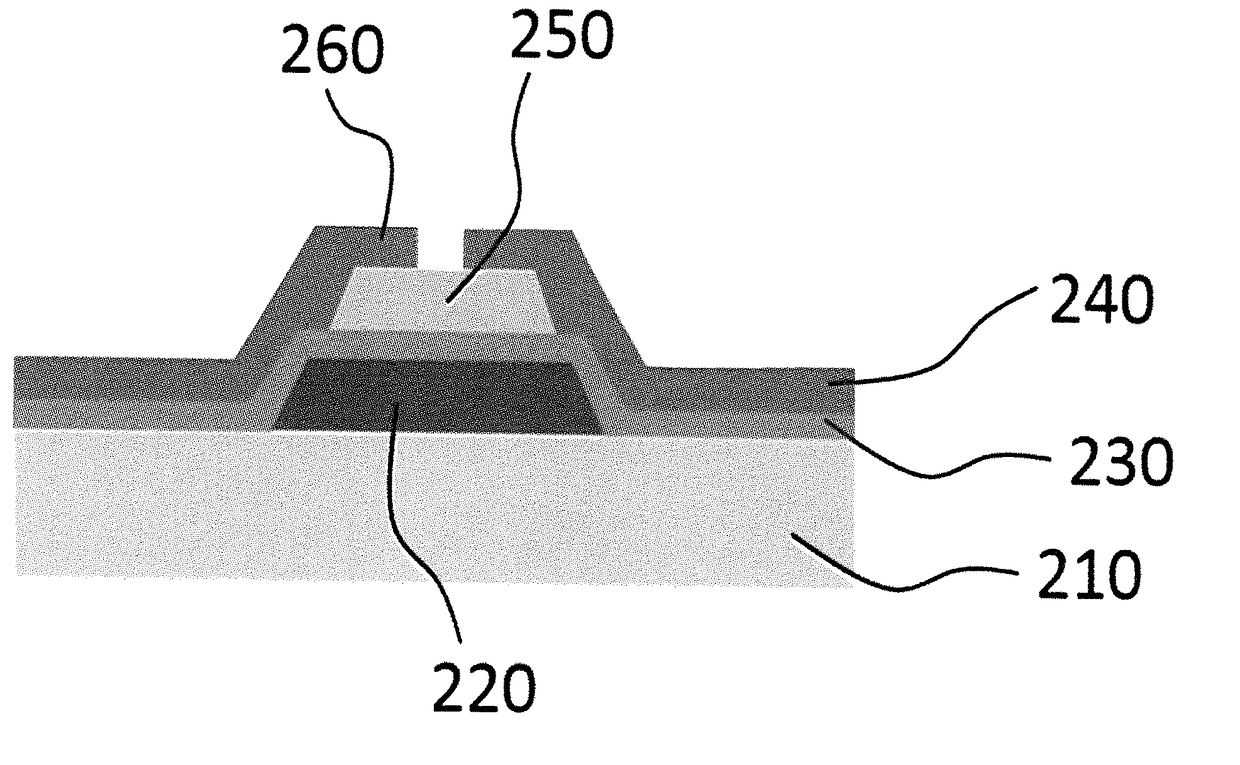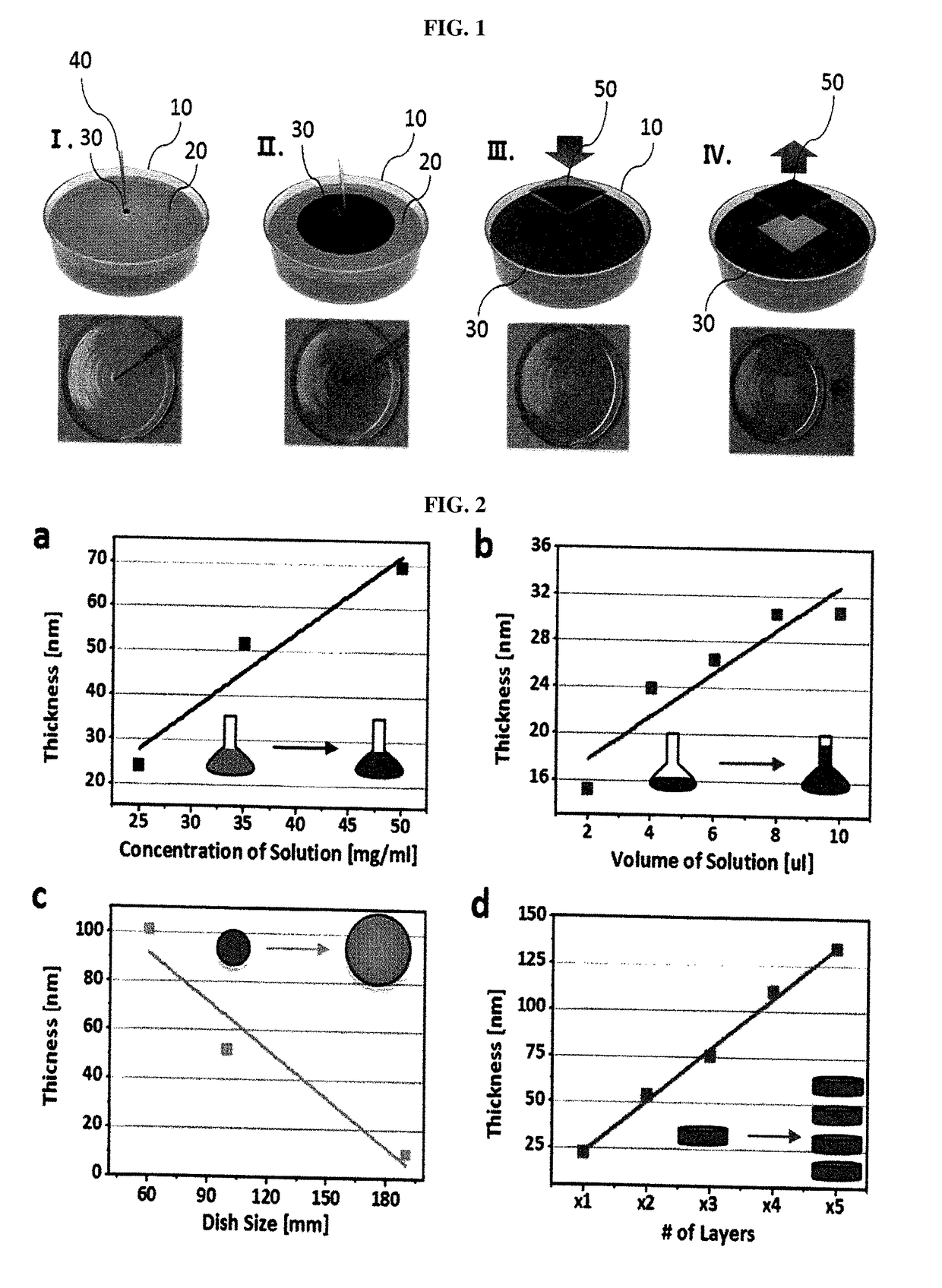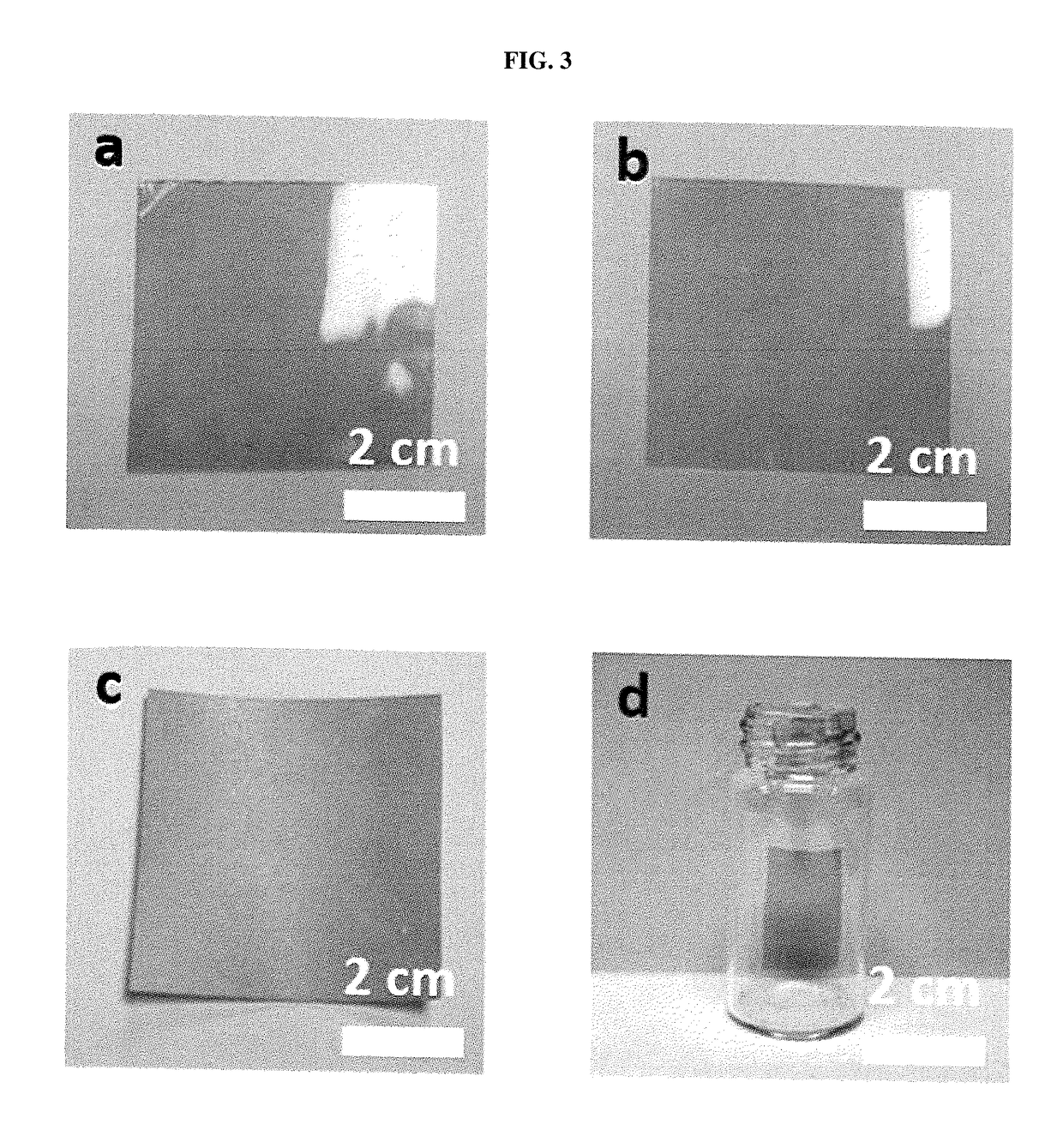Ultra-fast method for preparing organic/inorganic thin film by using self-diffusion effects
a thin film, self-diffusion technology, applied in the direction of organic semiconductor devices, sustainable manufacturing/processing, final product manufacturing, etc., can solve the problems of inability to manufacture large area organic solar cells with high efficiency, affecting the commercialization of organic solar cells considered as the next-generation energy source, etc., to achieve the effect of simple process, low material loss, and very rapid and effective formation
- Summary
- Abstract
- Description
- Claims
- Application Information
AI Technical Summary
Benefits of technology
Problems solved by technology
Method used
Image
Examples
example 1
on of Organic Solar Cell Device by Using Spontaneous Spreading Effect I
[0070]In this example, an organic solar cell was fabricated in the same manner as in Comparative Example 1, except that 10 μL of a solution prepared by dissolving 15 mg of P3HT and 12 mg of the fullerene derivative PCBM in 1 mL of chlorobenzene was dropped onto distilled water as a liquid substrate and an organic photoactive layer was formed by using the spontaneous spreading effect caused by the difference in surface tension between the two solutions and then transferred onto a hole transport layer.
[0071]The Voc, Jsc and FF of the fabricated organic solar cell were measured to be 0.67, 13.7 and 69%, respectively. The photovoltaic conversion rate was 6.3%. The voltage-current density measurement result is shown in FIG. 6.
example 2
on of Organic Solar Cell Device by Using Spontaneous Spreading Effect II
[0072]An organic solar cell was fabricated in the same manner as in Comparative Example 1, except that ITO having a sheet resistance of 30 Ω / sq and a thickness of ˜1,500 Å was prepared on a PEN substrate, 10 μL of a solution prepared by dissolving 10 mg of PTB7 and 15 mg of PC70BM in 1 mL of a 90:10 (v / v) solvent mixture of chlorobenzene and 1,8-diidooctane (DIO) was dropped onto distilled water as a liquid substrate and an organic photoactive layer was formed by using the spontaneous spreading effect caused by the difference in surface tension between the two solutions and then transferred onto a hole transport layer.
[0073]The Voc, Jsc and FF of the fabricated organic solar cell were measured to be 0.75, 14.7 and 68%, respectively. The photovoltaic conversion rate was 7.3%.
example 3
on of Organic Solar Cell Device by Using Spontaneous Spreading Effect III
[0074]An organic solar cell was fabricated in the same manner as in Comparative Example 1, except that 15 μL of a solution prepared by dissolving 15 mg of PTB7 and 10 mg of the polyperylene derivative PNDI in 1 mL of a 99.5:0.5 (v / v) solvent mixture of chlorobenzene and 1,8-diidooctane (DIO) was dropped onto distilled water as a liquid substrate and an organic photoactive layer was formed by using the spontaneous spreading effect caused by the difference in surface tension between the two solutions and then transferred onto a hole transport layer.
[0075]The Voc, Jsc and FF of the fabricated organic solar cell were measured to be 0.81, 18.8 and 51%, respectively. The photovoltaic conversion rate was 7.7%.
PUM
| Property | Measurement | Unit |
|---|---|---|
| diameter | aaaaa | aaaaa |
| thickness | aaaaa | aaaaa |
| thickness | aaaaa | aaaaa |
Abstract
Description
Claims
Application Information
 Login to View More
Login to View More - R&D
- Intellectual Property
- Life Sciences
- Materials
- Tech Scout
- Unparalleled Data Quality
- Higher Quality Content
- 60% Fewer Hallucinations
Browse by: Latest US Patents, China's latest patents, Technical Efficacy Thesaurus, Application Domain, Technology Topic, Popular Technical Reports.
© 2025 PatSnap. All rights reserved.Legal|Privacy policy|Modern Slavery Act Transparency Statement|Sitemap|About US| Contact US: help@patsnap.com



